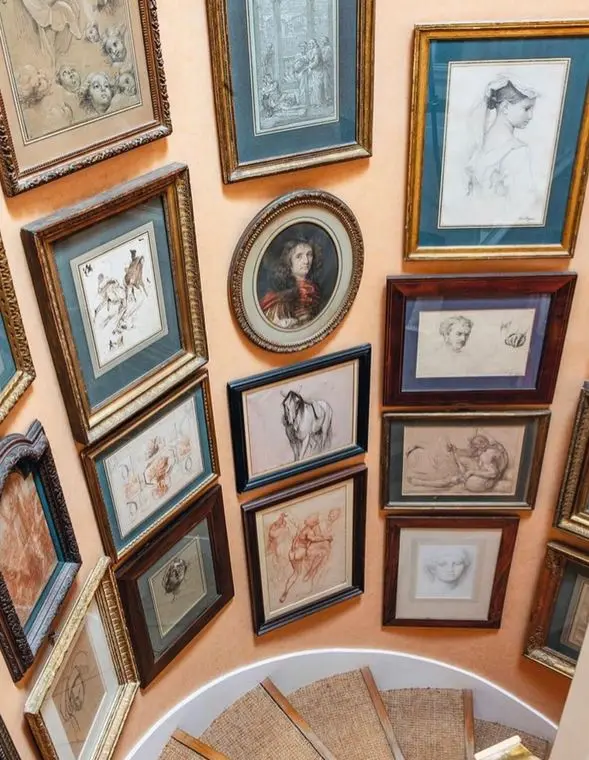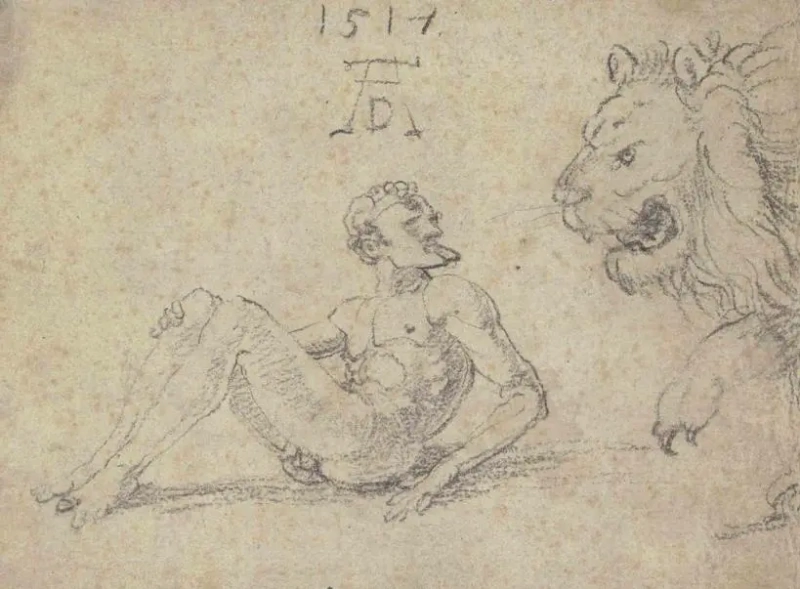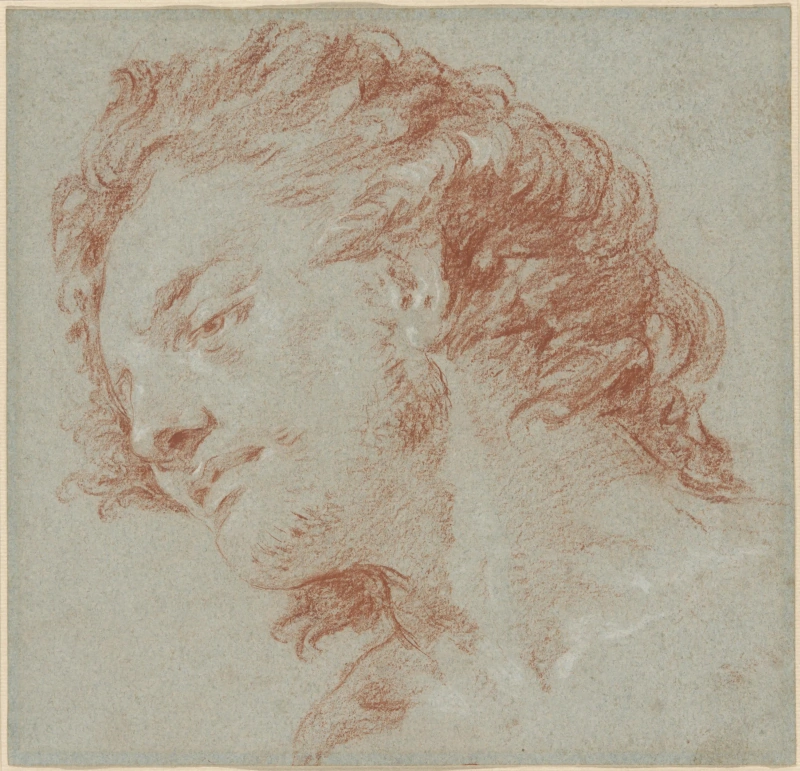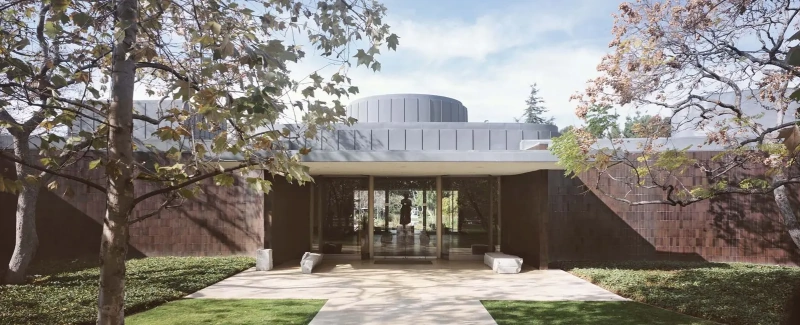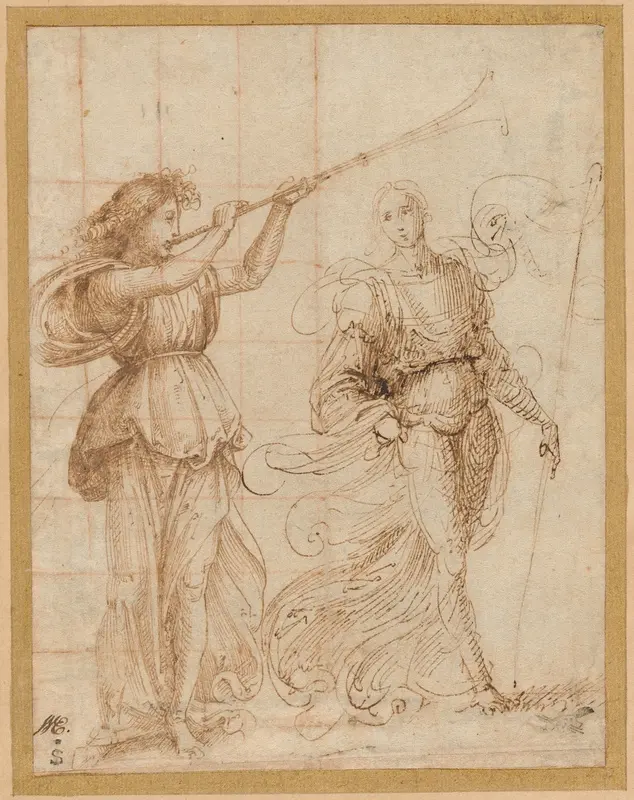log in
Enter site
Login to use Arthive functionality to the maximum
Francois Boucher (French: François Boucher; 29 September 1703 – 30 May 1770) was a French painter, who worked in the Rococo style.
Features of the artist Francois Boucher: versatility, as he depicted allegories, mythological and genre scenes. The artist was famous for his pastoral landscapes and portraits of Madame de Pompadour. Boucher worked in the arts and crafts genre: he designed sets for performances, sketches for trellises, and painted porcelain. Sensuality, cheerfulness, lightness and even frivolity in line with elegant color (based on light shades of pink and blue), roundness and asymmetry of lines, bold compositional solutions and dynamic brushstrokes – all this filled even the calmest and most serene paintings by Francois Boucher with movement.
Famous paintings by Francois Boucher: “Diana Bathing”, “Portrait of Madame de Pompadour”, “Hercules and Omphale”.
“And again, Monsieur Boucher pulled it off! He had chosen the ancient myths once again only to merely undress its heroines!”At the end of Francois Boucher’s life, criticism became especially ruthless to him. Nothing was forgiven. What whad been considered charming for many years was later declared disgustingly cutesy. Charming meant mannered. Piquant meant dirty or slutty. Boucher’s work was accused of depravity. He was convicted of lack of big ideas and minimal taste. In addition, the famous color, his so-called “pearl harmony”, became more primitive and rougher, as the painter gradually lost his sight, and Denis Didro slandered: “That way our Boucher will get to the coloring!”
Boucher was a much more significant and talented artist than he was thought by the loud critics of the Enlightenment, who were at the same time the ideologists of the bourgeois revolution. But there’s a need to look wider. Branding Boucher, in particular, they denounced the entire previous French “parasitic” social order, the singer of which he had a reputation for. And it was not the artist’s fault (by the way, the artist left about a thousand paintings and ten thousand drawings) that “we will renounce the old world” at some point took the form of “we will renounce Boucher’s creativity”.
He did not come from a completely noble family, although later he would have to work for King Louis XV and another half-dozen European monarchs. Nicola Boucher, his father, made a living, as they would say now, by industrial design. Sewing shops and weaving manufactories commissioned him to create patterns for lace or ornaments for fabrics, but that did not bring significant income. Then the head of the family decided to start trading in art market. That also did not make him rich, but he acquired some connections in the artistic environment. For example, he managed to have a deal with one of the best and most experienced teachers “by acquaintance”, the artist Francois Lemoyne, about teaching his son, who was getting very good at painting.
At the age of 20, Boucher received the main prize of the Royal Academy of Painting and Sculpture for the not-preserved painting “The Liberation of Yokam, a prisoner of Navuhudonosor”. The Grand Prix meant that he became a pensioner of the Academy which gave him the opportunity to study in Rome at the state’s expense. But he received the prize in 1723, and he was able to see Rome only in 1728. Biographers did not know why Boucher was refused in getting scholarship. It was only known that he earned money for a trip to the “eternal city” through the hard work of being an illustrator for five years in a row.
During those years, Boucher perfectly mastered the technique of engraving. He had to engrave the landscapes of the founder of the Rococo style Antoine Watteau. He was a generation older, and his influence on the formation of Boucher’s manner was fundamental.
By the time of his trip to Rome, where he went with Carl Van Loo and his nephews Michel and Francois, Boucher had been already an established artist. The president of the Academy of Arts himself had heard about him and promised the artist an extensive educational program, and of course, commissions from customers. But these plans got ruined: unluckily, Boucher was ill with a fever and forced to return from Rome to Paris.
In 1734, he exhibited at the Academy his “Rinaldo and Armida” painting, which was about to receive a tremendous success. Boucher acquired the official title of “a painter of historical scenes” for his work. That meant entering the club of the artistic elite: historical (mythological) painting was still considered to be the highest kind of art.
Already the following year, the first commissions from the royal court followed. Boucher was awarded the honor of arranging the chambers of Louis XV at Versailles (“Tiger Hunt”, “Crocodile Hunt”). And the court ladies literally “were tearing Boucher to pieces”: everyone wanted to have an interior made in fashionable rococo style!
The year 1748 marked the beginning of his collaboration with the legendary Madame de Pompadour – Boucher’s name from then on would be inevitably associated with her. The powerful and wayward favorite of Louis XV obtained permission for the artist to live in the Louvre: he had to decorate the dining room in Fontainebleau and the cabinet of the Council. Partly inheriting his father's craft, Boucher created drawings for trellis. In the meantime, Pompadour wanted him to be appointed to the position of the director of the Royal Tapestry Manufactory.
The narrative contents and subjects of the main paintings by Francois Boucher, his tapestries and trellises were mostly pastoral and gallant scenes. And, obviously, Boucher was constantly surrounded by female dancers, actresses and ladies of the world. Pompadour was also happy to pose for him. The portraits had a tendency to be quite melancholic and too chaste - both for Boucher and for the odious favorite. Rumors attributed to the artist the love of love and the various forms of subtle debauchery, and Didro was indignant: “There’s no chance that he really is capable of creating something really elegant, this Boucher, who spends his days in the “society of women of the lowest cost!”
But in reality, we know very little about Boucher’s personal life. The rumors don’t back anything up due to the lack of documentary evidence. However, we do not have the rebuttals either.
The artist happily married when his career was just starting to gain momentum. Marie-Jeanne Buzot became his wife, a pretty daughter of a famous judge in Paris. His father-in-law expressed dissatisfaction with the “low” origin of the painter, but put up with it anyway, since the name of the latter was already heard by the Parisian public. Marie-Jeanne was one and a half decades younger than her husband. Francois Boucher presented her semi-childish, doll-like face to the subjects of his paintings - Princess Armida (“Rinaldo and Armida”) and various Venuses (1, 2, 3).
Three children were born in Francois Boucher’s family. Interestingly enough, all of them, one way or another, continued the artistic dynasty. The eldest daughter married a student of Boucher, the artist Jean Baptiste Deseux. The youngest daughter married Boucher’s other student, Pierre Antoine Baudouin. The artist’s son, Juste-Nathan, became an architect.
Boucher’s reputation as a painter of erotic art was pretty exaggerated. He, indeed, was a master of nude female body painting. Perhaps, more unreservedly than other French artists before him. Such, for example, were portraits of odalisks - light and dark - made not without Rubens’ influence. Francois Boucher’s painting “Venus demanding arms from Vulcan for Aeneas” was really not so much mythological as it was erotic. And “Hercules and Omphala”, indeed, gave viewers the impression of animal sensuality. But that’s where Boucher’s erotic paintings came to an end.
But Boucher was also an illustrator and publisher (his illustrations for Moliere, drawings for Ovid's Metamorphoses and the catalog of rocaille ornaments were especially famous). He was also a gifted decorator who designed the best examples of architecture of the Rococo epoch (Hotel Subiz and others). Boucher was also a landscape painter and set designer of the best performances at the Royal Theater. His work had always been inextricably linked with many facets of the cultural life of France.
Didro swore that the landscapes painted by Boucher did not have any truth and not a single real blade of grass. But there, Boucher turned out to be a hostage to the classical tradition mastered in Rome. His landscapes had really little to do with France. That was rather a classic “Italian landscape” with picturesque ruins of a castle on the horizon and sharp horizontal pines. But what was important was that in the famous self-portrait, Boucher portrayed himself as a landscape painter.
Boucher was much more interesting as a genre artist. But there the case was limited to only a few paintings - truthfully, of high standard. The Swedish Queen Lovisa Ulrika commissioned Boucher with a series of “Four parts of a fashionista’s day”, but Boucher managed to paint only “The Morning” (“A lady fastening her garter”). A genre scene called “Breakfast” was also very good (many people see Boucher’s family members there).
The question was: why didn’t Boucher develop his talent in exactly that direction? There was an opinion that, being an honest and deeply decent man, Boucher simply did not want to compete with the “star” of genre painting of that time, Jean Baptiste Chardin.
Since about 1757, the artist’s fame started fading away. Critics were destroying him, and the public began to understand that Francois Boucher’s artworks were completely morally obsolete. In the 1760s, the oppressed Boucher even considered going to teach in Russia, where Catherine the Great welcomed the French masters. In 1769, he had prepared a sketch of a decorative panel called “Pygmalion and Galatea”, which the sculptor Etienne Falcone took to St. Petersburg at the request of the artist. Unfortunately, Boucher’s trip was not destined to take place: the artist died in his Louvre apartment on May 30, 1770.
Author: Anna Vcherashnyaya
Read more
Features of the artist Francois Boucher: versatility, as he depicted allegories, mythological and genre scenes. The artist was famous for his pastoral landscapes and portraits of Madame de Pompadour. Boucher worked in the arts and crafts genre: he designed sets for performances, sketches for trellises, and painted porcelain. Sensuality, cheerfulness, lightness and even frivolity in line with elegant color (based on light shades of pink and blue), roundness and asymmetry of lines, bold compositional solutions and dynamic brushstrokes – all this filled even the calmest and most serene paintings by Francois Boucher with movement.
Famous paintings by Francois Boucher: “Diana Bathing”, “Portrait of Madame de Pompadour”, “Hercules and Omphale”.
“And again, Monsieur Boucher pulled it off! He had chosen the ancient myths once again only to merely undress its heroines!”At the end of Francois Boucher’s life, criticism became especially ruthless to him. Nothing was forgiven. What whad been considered charming for many years was later declared disgustingly cutesy. Charming meant mannered. Piquant meant dirty or slutty. Boucher’s work was accused of depravity. He was convicted of lack of big ideas and minimal taste. In addition, the famous color, his so-called “pearl harmony”, became more primitive and rougher, as the painter gradually lost his sight, and Denis Didro slandered: “That way our Boucher will get to the coloring!”
Boucher was a much more significant and talented artist than he was thought by the loud critics of the Enlightenment, who were at the same time the ideologists of the bourgeois revolution. But there’s a need to look wider. Branding Boucher, in particular, they denounced the entire previous French “parasitic” social order, the singer of which he had a reputation for. And it was not the artist’s fault (by the way, the artist left about a thousand paintings and ten thousand drawings) that “we will renounce the old world” at some point took the form of “we will renounce Boucher’s creativity”.
He did not come from a completely noble family, although later he would have to work for King Louis XV and another half-dozen European monarchs. Nicola Boucher, his father, made a living, as they would say now, by industrial design. Sewing shops and weaving manufactories commissioned him to create patterns for lace or ornaments for fabrics, but that did not bring significant income. Then the head of the family decided to start trading in art market. That also did not make him rich, but he acquired some connections in the artistic environment. For example, he managed to have a deal with one of the best and most experienced teachers “by acquaintance”, the artist Francois Lemoyne, about teaching his son, who was getting very good at painting.
At the age of 20, Boucher received the main prize of the Royal Academy of Painting and Sculpture for the not-preserved painting “The Liberation of Yokam, a prisoner of Navuhudonosor”. The Grand Prix meant that he became a pensioner of the Academy which gave him the opportunity to study in Rome at the state’s expense. But he received the prize in 1723, and he was able to see Rome only in 1728. Biographers did not know why Boucher was refused in getting scholarship. It was only known that he earned money for a trip to the “eternal city” through the hard work of being an illustrator for five years in a row.
During those years, Boucher perfectly mastered the technique of engraving. He had to engrave the landscapes of the founder of the Rococo style Antoine Watteau. He was a generation older, and his influence on the formation of Boucher’s manner was fundamental.
By the time of his trip to Rome, where he went with Carl Van Loo and his nephews Michel and Francois, Boucher had been already an established artist. The president of the Academy of Arts himself had heard about him and promised the artist an extensive educational program, and of course, commissions from customers. But these plans got ruined: unluckily, Boucher was ill with a fever and forced to return from Rome to Paris.
In 1734, he exhibited at the Academy his “Rinaldo and Armida” painting, which was about to receive a tremendous success. Boucher acquired the official title of “a painter of historical scenes” for his work. That meant entering the club of the artistic elite: historical (mythological) painting was still considered to be the highest kind of art.
Already the following year, the first commissions from the royal court followed. Boucher was awarded the honor of arranging the chambers of Louis XV at Versailles (“Tiger Hunt”, “Crocodile Hunt”). And the court ladies literally “were tearing Boucher to pieces”: everyone wanted to have an interior made in fashionable rococo style!
The year 1748 marked the beginning of his collaboration with the legendary Madame de Pompadour – Boucher’s name from then on would be inevitably associated with her. The powerful and wayward favorite of Louis XV obtained permission for the artist to live in the Louvre: he had to decorate the dining room in Fontainebleau and the cabinet of the Council. Partly inheriting his father's craft, Boucher created drawings for trellis. In the meantime, Pompadour wanted him to be appointed to the position of the director of the Royal Tapestry Manufactory.
The narrative contents and subjects of the main paintings by Francois Boucher, his tapestries and trellises were mostly pastoral and gallant scenes. And, obviously, Boucher was constantly surrounded by female dancers, actresses and ladies of the world. Pompadour was also happy to pose for him. The portraits had a tendency to be quite melancholic and too chaste - both for Boucher and for the odious favorite. Rumors attributed to the artist the love of love and the various forms of subtle debauchery, and Didro was indignant: “There’s no chance that he really is capable of creating something really elegant, this Boucher, who spends his days in the “society of women of the lowest cost!”
But in reality, we know very little about Boucher’s personal life. The rumors don’t back anything up due to the lack of documentary evidence. However, we do not have the rebuttals either.
The artist happily married when his career was just starting to gain momentum. Marie-Jeanne Buzot became his wife, a pretty daughter of a famous judge in Paris. His father-in-law expressed dissatisfaction with the “low” origin of the painter, but put up with it anyway, since the name of the latter was already heard by the Parisian public. Marie-Jeanne was one and a half decades younger than her husband. Francois Boucher presented her semi-childish, doll-like face to the subjects of his paintings - Princess Armida (“Rinaldo and Armida”) and various Venuses (1, 2, 3).
Three children were born in Francois Boucher’s family. Interestingly enough, all of them, one way or another, continued the artistic dynasty. The eldest daughter married a student of Boucher, the artist Jean Baptiste Deseux. The youngest daughter married Boucher’s other student, Pierre Antoine Baudouin. The artist’s son, Juste-Nathan, became an architect.
Boucher’s reputation as a painter of erotic art was pretty exaggerated. He, indeed, was a master of nude female body painting. Perhaps, more unreservedly than other French artists before him. Such, for example, were portraits of odalisks - light and dark - made not without Rubens’ influence. Francois Boucher’s painting “Venus demanding arms from Vulcan for Aeneas” was really not so much mythological as it was erotic. And “Hercules and Omphala”, indeed, gave viewers the impression of animal sensuality. But that’s where Boucher’s erotic paintings came to an end.
But Boucher was also an illustrator and publisher (his illustrations for Moliere, drawings for Ovid's Metamorphoses and the catalog of rocaille ornaments were especially famous). He was also a gifted decorator who designed the best examples of architecture of the Rococo epoch (Hotel Subiz and others). Boucher was also a landscape painter and set designer of the best performances at the Royal Theater. His work had always been inextricably linked with many facets of the cultural life of France.
Didro swore that the landscapes painted by Boucher did not have any truth and not a single real blade of grass. But there, Boucher turned out to be a hostage to the classical tradition mastered in Rome. His landscapes had really little to do with France. That was rather a classic “Italian landscape” with picturesque ruins of a castle on the horizon and sharp horizontal pines. But what was important was that in the famous self-portrait, Boucher portrayed himself as a landscape painter.
Boucher was much more interesting as a genre artist. But there the case was limited to only a few paintings - truthfully, of high standard. The Swedish Queen Lovisa Ulrika commissioned Boucher with a series of “Four parts of a fashionista’s day”, but Boucher managed to paint only “The Morning” (“A lady fastening her garter”). A genre scene called “Breakfast” was also very good (many people see Boucher’s family members there).
The question was: why didn’t Boucher develop his talent in exactly that direction? There was an opinion that, being an honest and deeply decent man, Boucher simply did not want to compete with the “star” of genre painting of that time, Jean Baptiste Chardin.
Since about 1757, the artist’s fame started fading away. Critics were destroying him, and the public began to understand that Francois Boucher’s artworks were completely morally obsolete. In the 1760s, the oppressed Boucher even considered going to teach in Russia, where Catherine the Great welcomed the French masters. In 1769, he had prepared a sketch of a decorative panel called “Pygmalion and Galatea”, which the sculptor Etienne Falcone took to St. Petersburg at the request of the artist. Unfortunately, Boucher’s trip was not destined to take place: the artist died in his Louvre apartment on May 30, 1770.
Author: Anna Vcherashnyaya
-
Artworks liked by301 users
- Artworks in 11 collections and 305 selections
Publication
Exhibitions
All exhibitions of the artist
Three Graces Carrying Cupid
1770, 80×65 cm

Venus and Cupid
1767, 25.5×37 cm

Allegory of art
1765, 101.5×130 cm

Aurora heralding the arrival of the morning sun
1765, 46×40.2 cm

Boy holding net
1762, 38.5×24.8 cm

River landscape with ruins and bridge
1762, 58.5×72 cm

Pastoral landscape with girl, udasa fish
1761, 47×66 cm

Wanderers in Emmaus
1760-th
, 33.8×27.8 cm
Feed
The French taste of the Yusupov princesexhibition finished

November 20, 2021 − August 28, 2022 Historical-architectural and art Museum "New Jerusalem", Novo-Ierusalimskaya Embankment, 1, Istra
The French taste of the Yusupov princesexhibition added

November 20, 2021 − August 28, 2022 Historical-architectural and art Museum "New Jerusalem", Novo-Ierusalimskaya Embankment, 1, Istra











